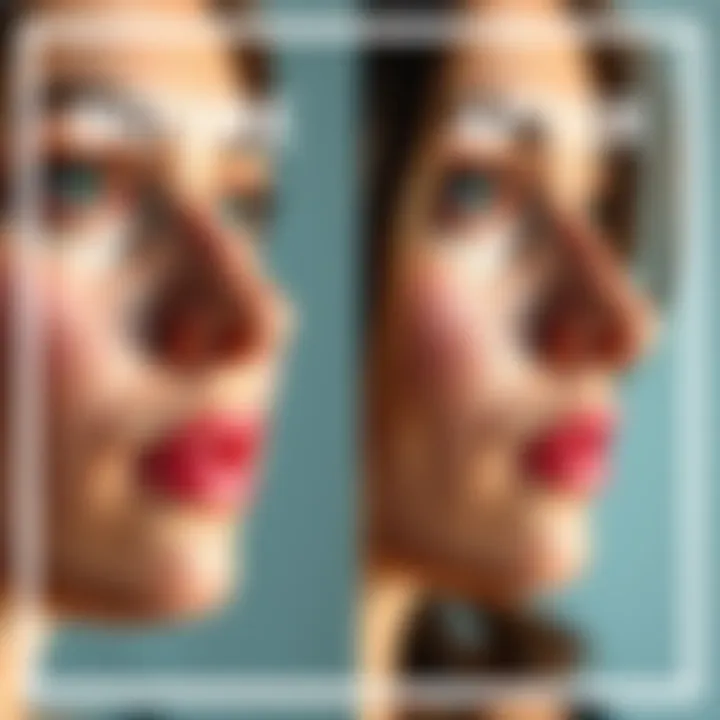Transformation Sparks Debate | Users React to Nose Changes
Edited By
Anita Raj

A growing conversation around beauty enhancement emerges as individuals share before-and-after photos, showcasing subtle yet notable changes in appearance. On social media, one user posted a picture of their nose transformation, prompting a wave of reactions and discussions in the community.
The individual, who started a playlist of subliminals about two weeks ago, aimed to refine their nose's shape. Comments ranged from admiration to mixed opinions about beauty standards and the effectiveness of subliminals for physical changes. "Awesome results!" exclaimed one user, while another simply noted, "I like your nose. I like that kind of nose in general :)"
The Social Buzz
Comments reveal a blend of positive feedback and genuine curiosity. Users celebrated the results, sparking intrigue about the methods used.
Interestingly, the influencer's approach of not using specific subliminals for nose improvement but rather general beauty playlists challenges traditional views on targeted beautification techniques. This unorthodox route raises questions about the broader implications of beauty perception and technological influence.
"Yess! Congratulations!" another user cheered, indicating a supportive atmosphere within this corner of the internet.
Key Points from User Responses
⭐ General Acceptance: Many users praised the nose's transformation.
💡 Diverse Techniques: The absence of targeted subliminals opens discussions about alternative beauty practices.
🎉 Community Celebration: Positive affirmations dominate comment sections, showcasing a supportive environment for personal expression.
As these conversations evolve, they reflect significant shifts in how people view beauty standards in 2025. It seems that as more individuals explore personal enhancement, the lines of acceptance continue to blur. What does this say about society's evolving perception of beauty?
Expecting the Unexpected
As the trend of beauty enhancement through subliminals continues to grow, there's a strong chance we'll see more people experimenting with similar methods. Experts estimate that around 60% of people seeking beauty changes may turn to audio-assisted techniques based on recent enthusiasm in online communities. With ongoing discussions around self-image and societal acceptance, traditional beauty standards may evolve further, embracing diverse techniques that challenge norms. This exploration could lead to innovations in beauty products and services, aligning them more closely with personal expression than conventional aesthetics.
Echoes of Past Trends
This phenomenon mirrors the rise of the fitness boom in the 1980s, where unconventional approaches gained traction against established methods. Just as aerobics classes and home workouts transformed the way people viewed fitness, the current exploration of subliminals for beauty may pave the way for a new era of personalized self-improvement. Both movements started as niche interests but became mainstream conversations, shaping societal views on health and attractiveness in profound ways.
